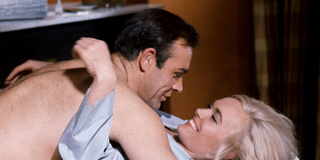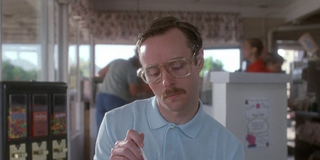Wednesday, 27 April 2016
London Pubs
London Pubs
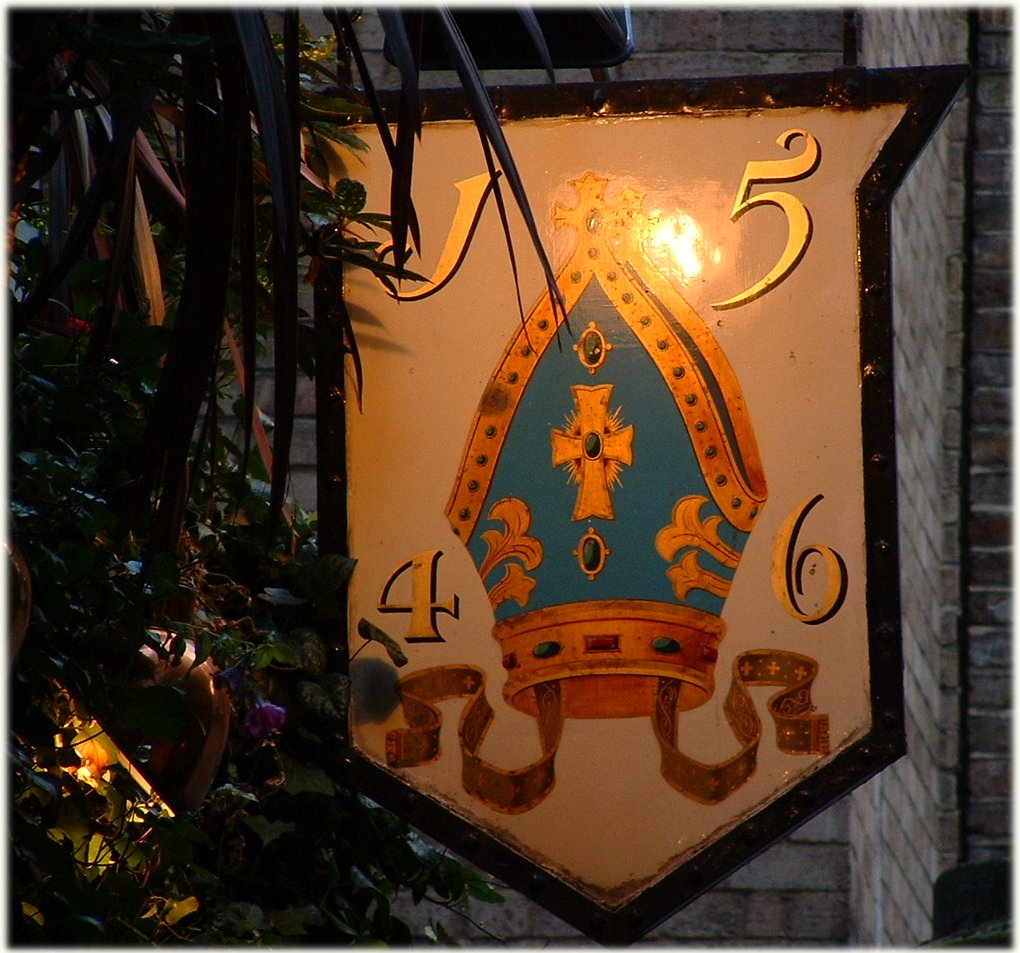
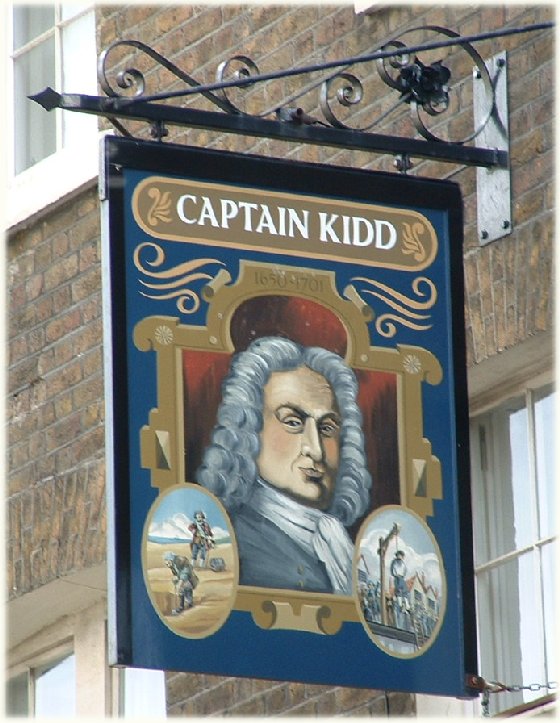 The Origins of the pub signs. In 1393 King Richard II decreed that pubs must have signs so that the examiner or tester of ales would know the location of each pub. The pictorial sign was developed in the times when the vast majority of the population were illiterate and needed something large, simple and bright to recognise.
The Origins of the pub signs. In 1393 King Richard II decreed that pubs must have signs so that the examiner or tester of ales would know the location of each pub. The pictorial sign was developed in the times when the vast majority of the population were illiterate and needed something large, simple and bright to recognise.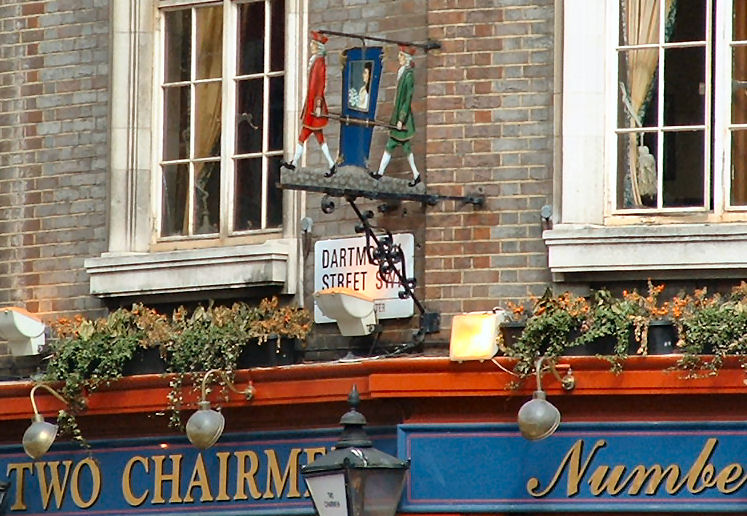
The Prospect of Whitby : 57 Wapping Wall E.1
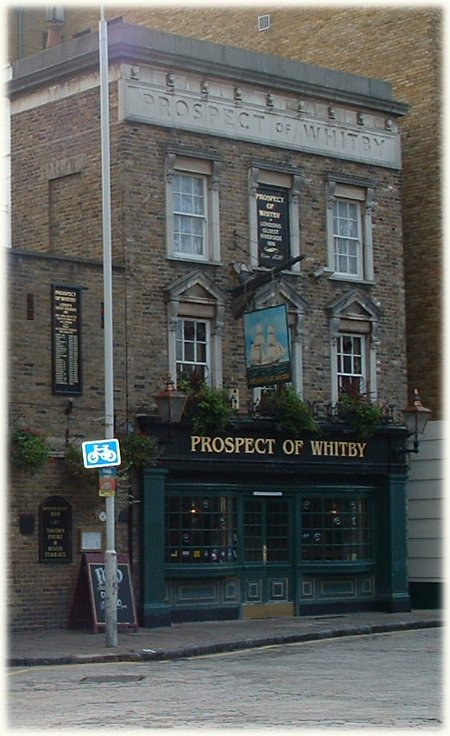

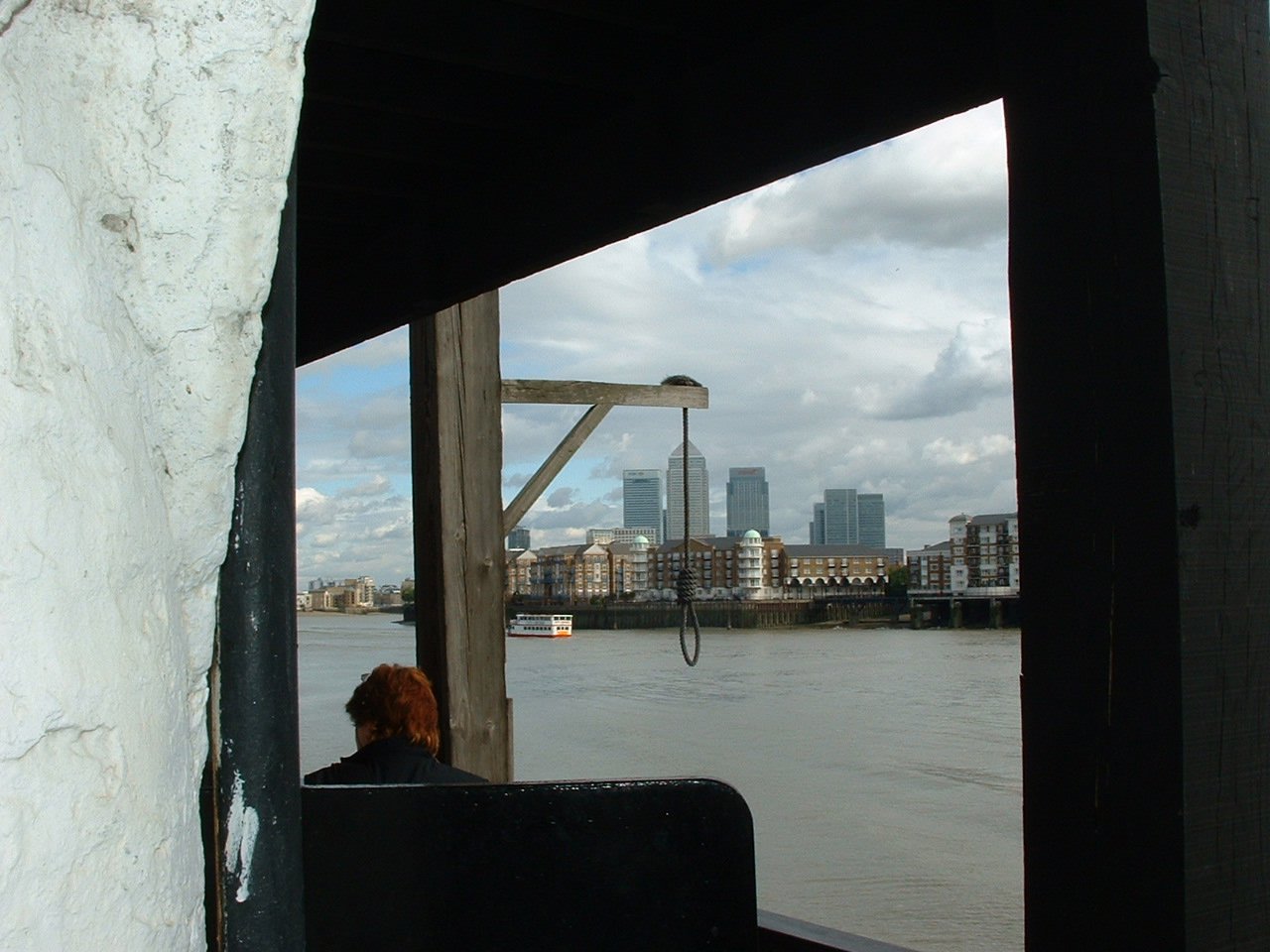
The riverside view from the Prospect of Whitby with the reminder of the hanging gallows complete with noose.

Town of Ramsgate : 62 Wapping high Street E.1
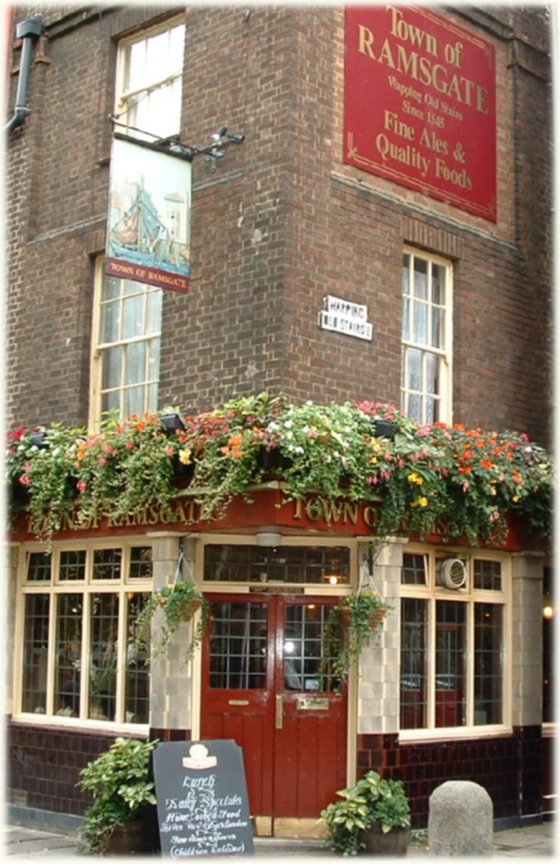
The Widow's Son : 75 Devons Road, Bow E.3
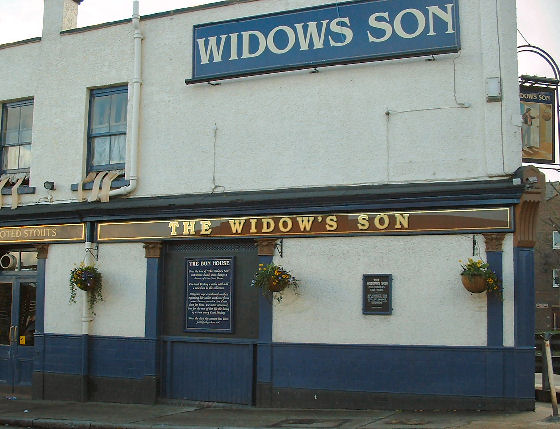
The Mayflower : 117 Rotherhithe Street, S.E.16
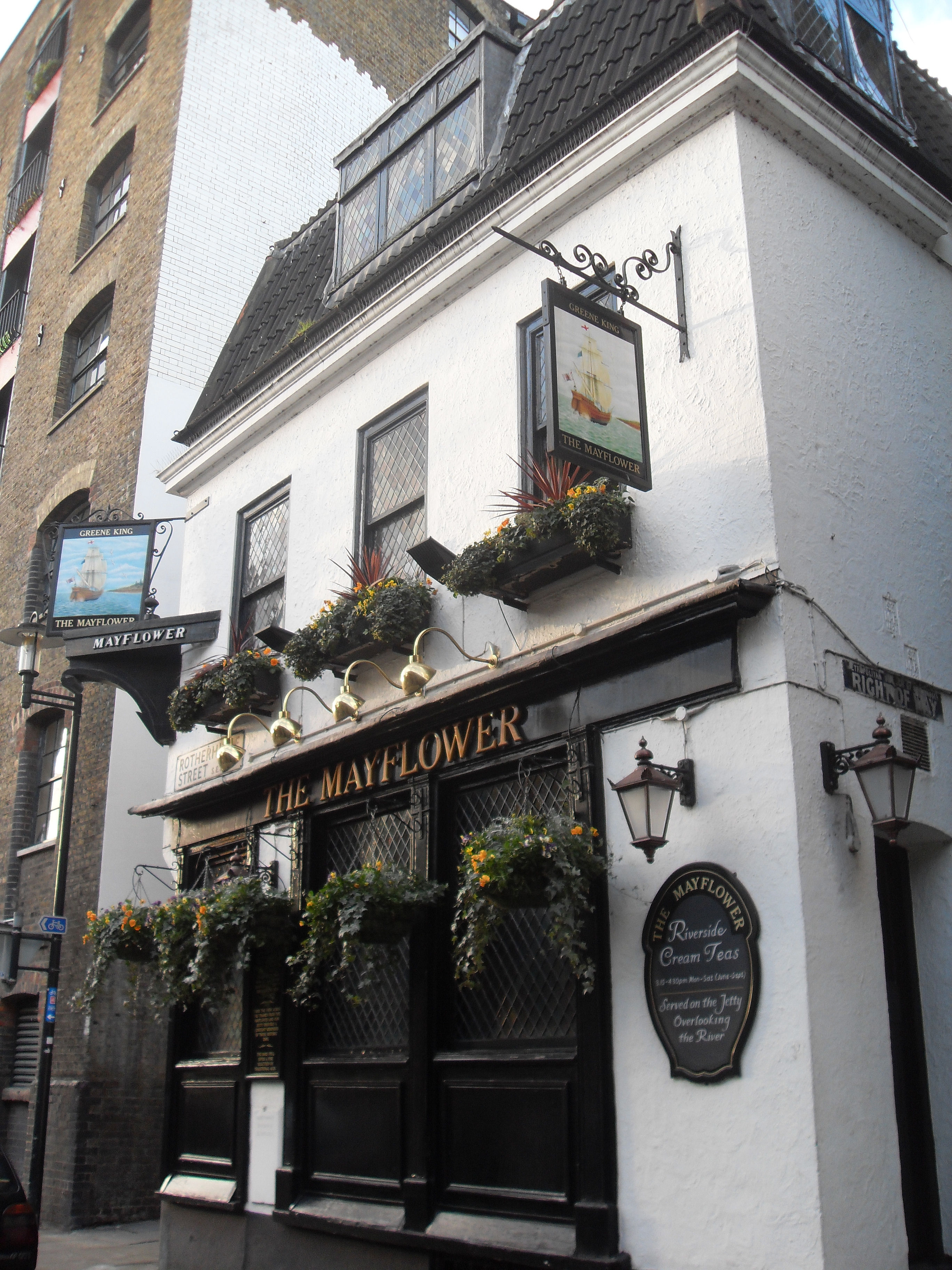
Ye Olde Watling : Watling street, E.C.4
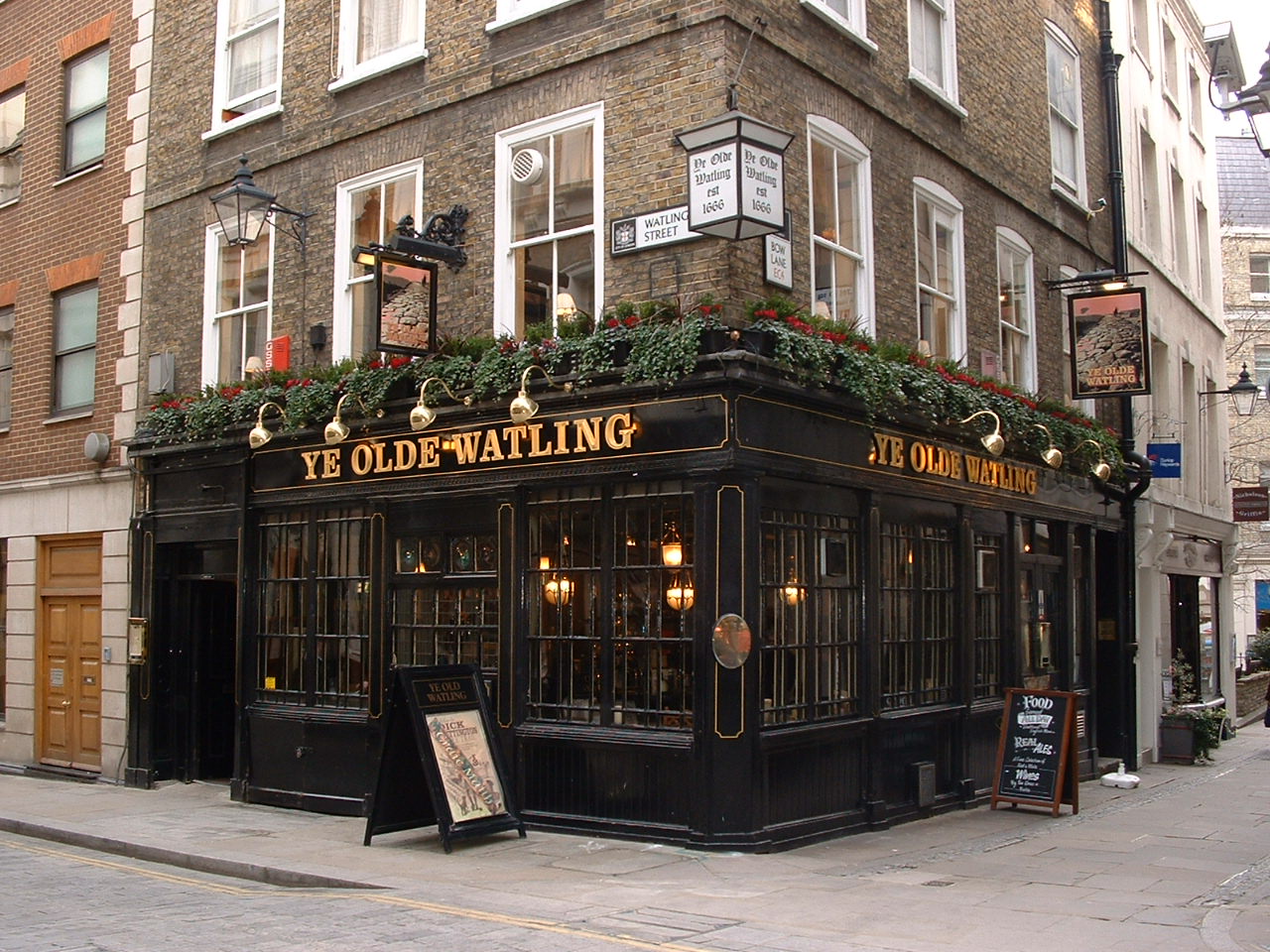
Williamson's Tavern : 1 Groveland Court, Off Bow Lane, London, EC4
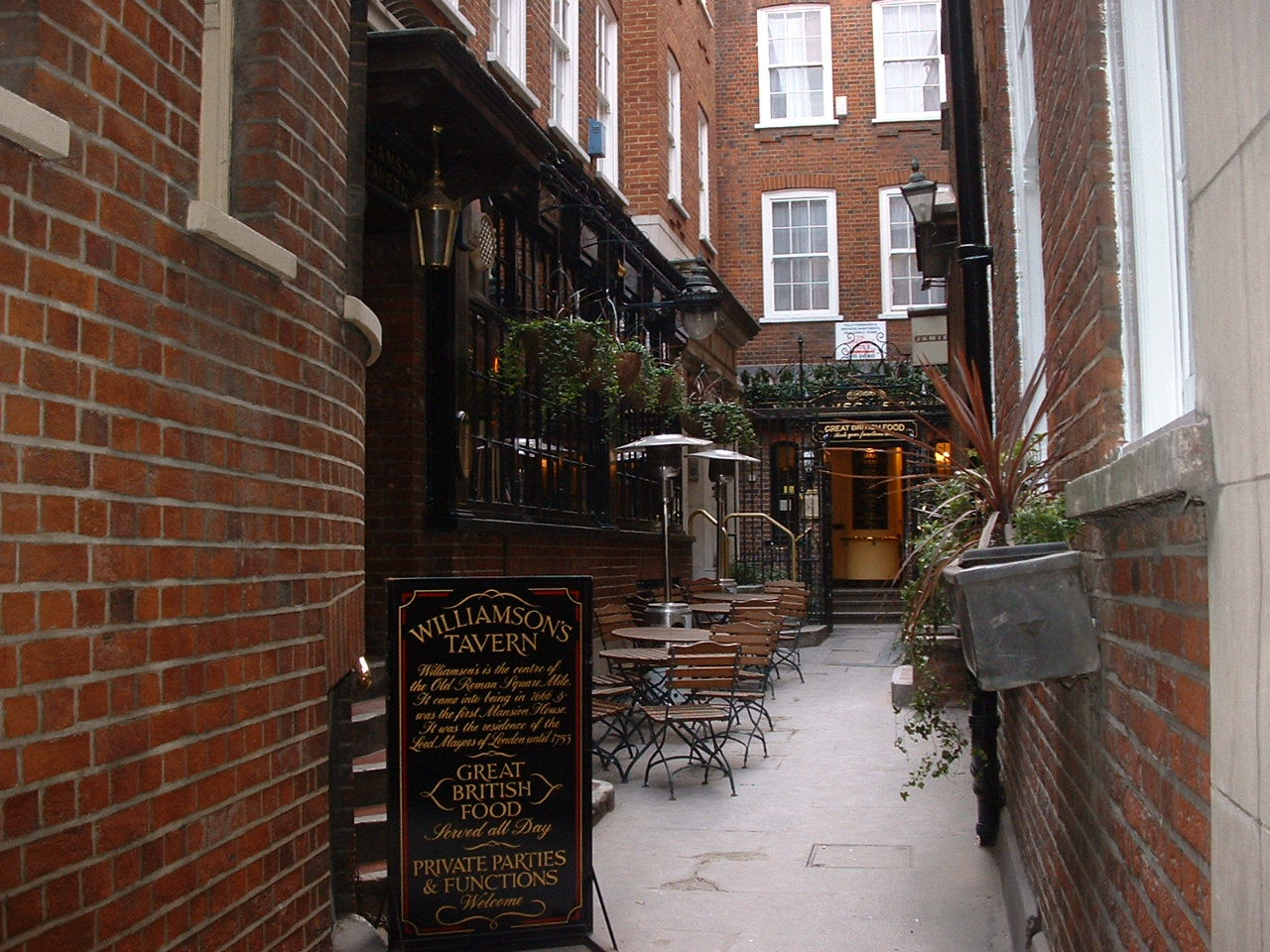
The Bleeding Heart Tavern : Bleeding Heart Yard, E.C.1
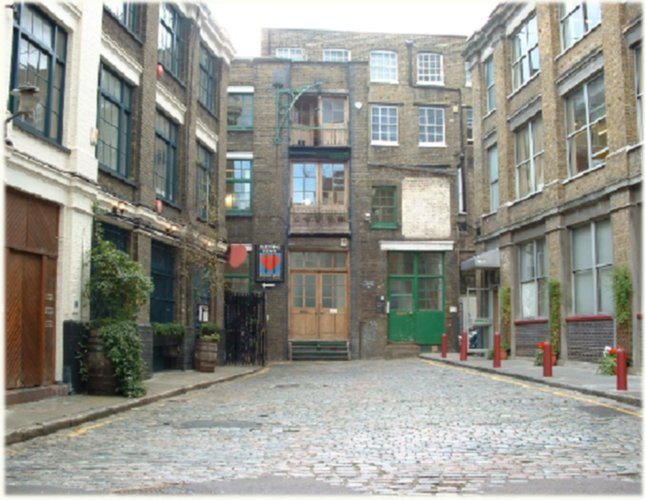
The Mitre Tavern : Mitre court Hatton garden, E.C.1
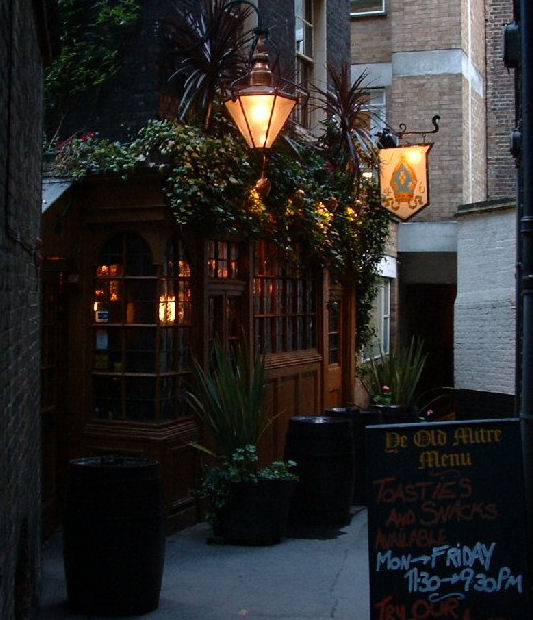
The George : Wanstead High Street, E11
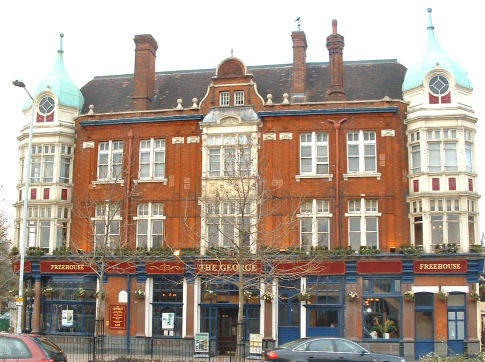
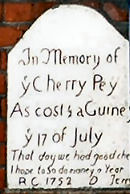
Hand and Shears : Cloth Fair E C 1
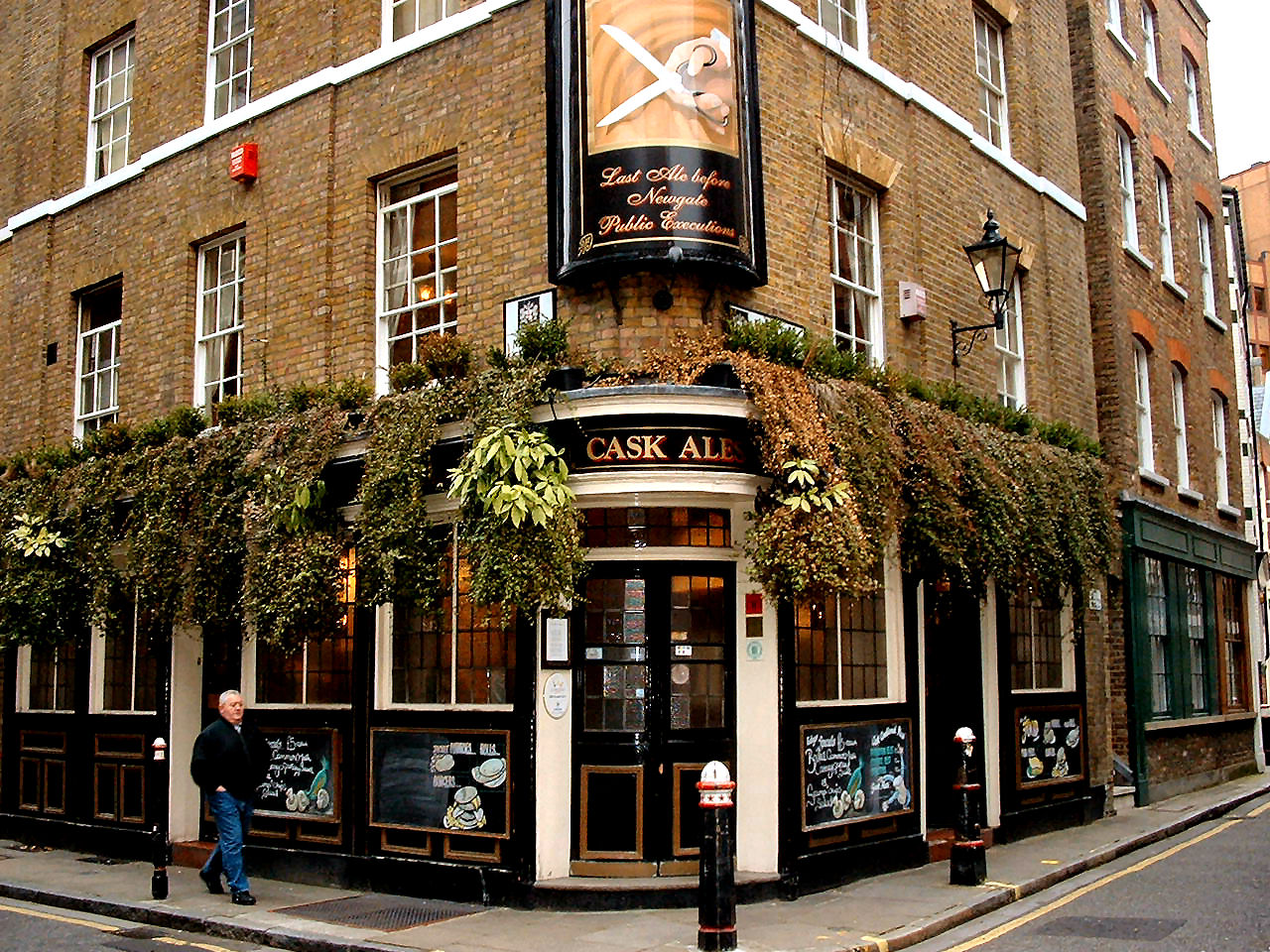
The Viaduct Tavern : 126 Newgate Street, E C 1

See the cells here
Dirty Dicks : 202 Bishopsgate, E C 1
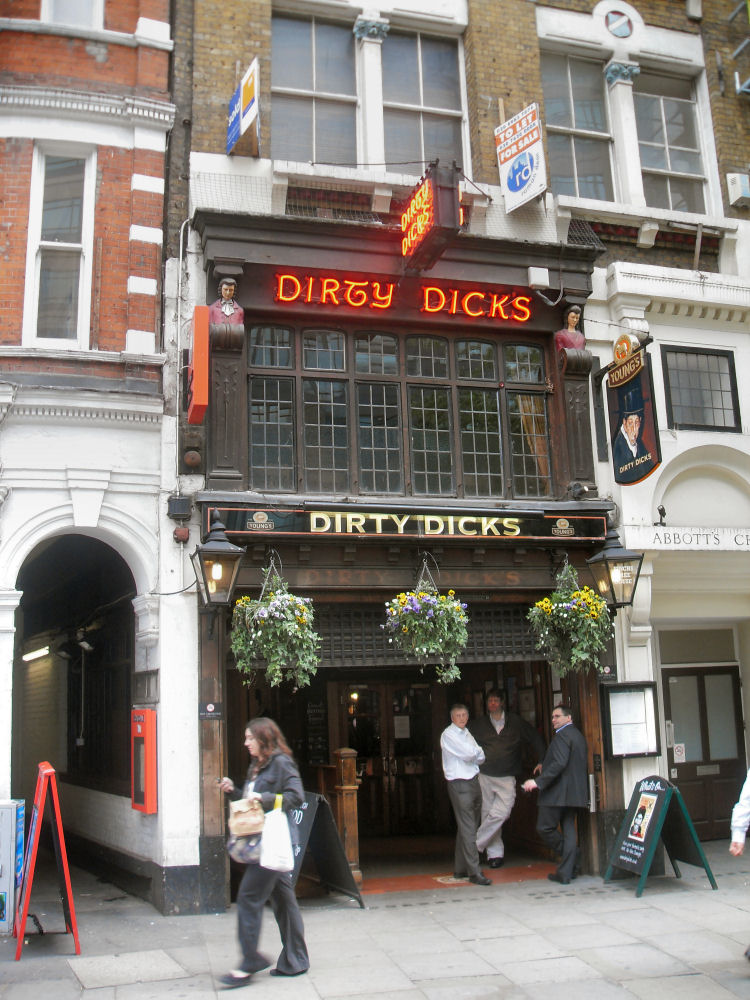
The Anchor : 34 Bankside, Southwark, S.E.1
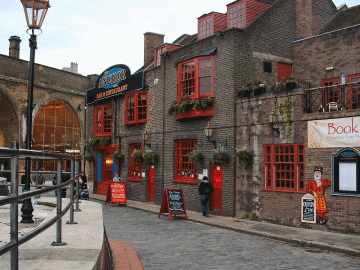
The George Inn : Borough high street, S.E.1
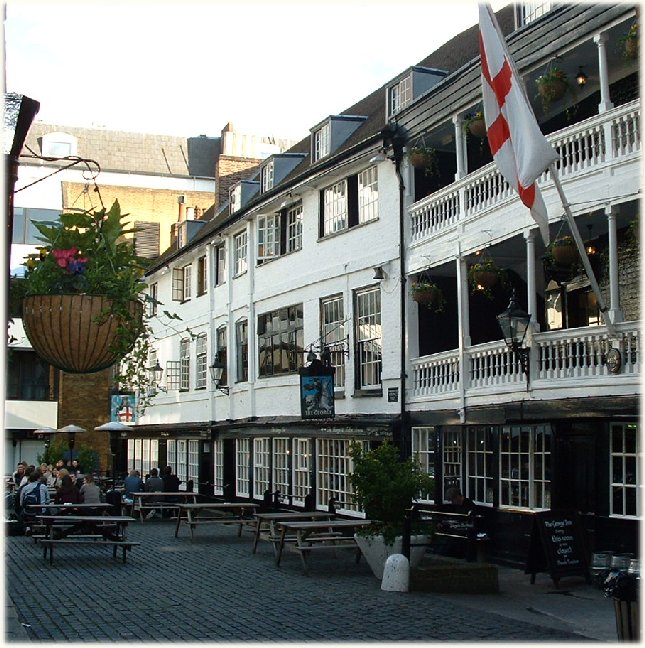
The Queen's Larder : 1 Queens Square, W C 1
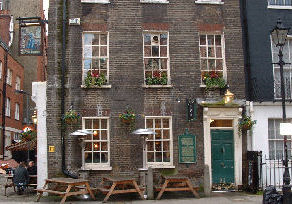
His treatment at Queens Square were often humiliating and horrific. George was tied down into an iron chair and disgusting remedies were smeared over his body. During the King's confinement at Queens Square, his wife, Queen Charlotte, stored delicacies for her husband in the cellar of this pub.
Jerusalem Tavern : Britton Street, E.C.1
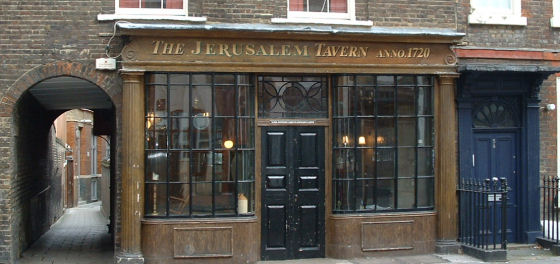
The Jerusalem Tavern with the side passage where Thomas Britten played his concerts.
Wooden tables and alcoves add to the charm of the Jerusalem Tavern, settle back and forget the outside world for a bit.
The Red Lion : Colchester Street Aldgate E.1
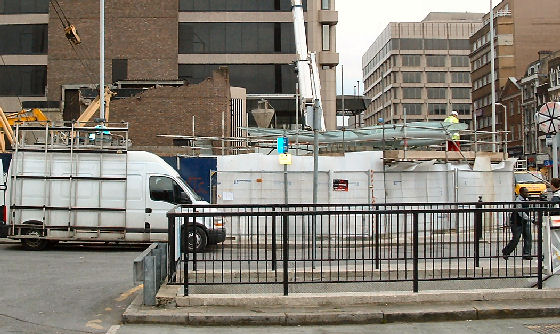
The site of the Red Lion during demolition work
Crown and Two Chairmen : 31-32 Dean Street, W1
The Cockpit Tavern : 7 St Andrews Hill, EC4

Up stairs viewing Gallery of the Cockpit Tavern

Outside view of the Cockpit Tavern
Morpeth Arms : Millbank
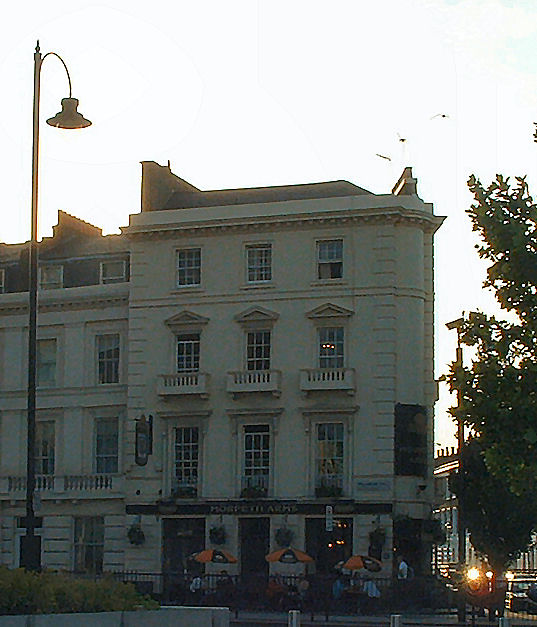

The barman checking out the old prison cells for the ghost.
The BlackFriar : 176 Queen Victoria Street
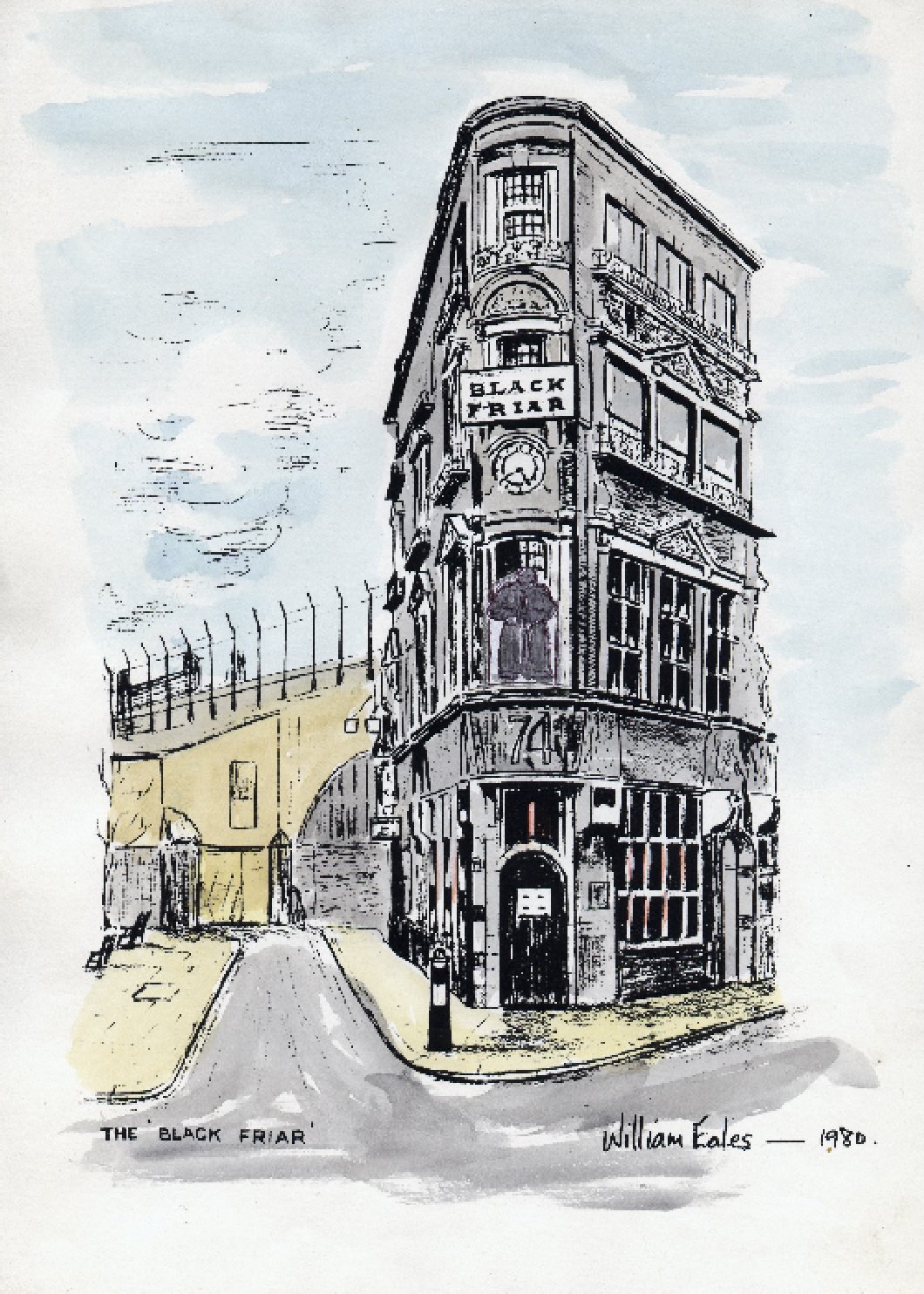
This pub stands on the site of Blackfriars monastery, built in 1221 demolished in 1538. The pub was built in 1904, and contains a large monk laughing above the entrance to the pub. Contains many illustrations of monks and friars. Fragments of some monastery wall were built around Shakespeare's Play house theatre in Ireland yard and are still there today.
Water colour by William Eales
Masons Arms : Maddox Street W.1
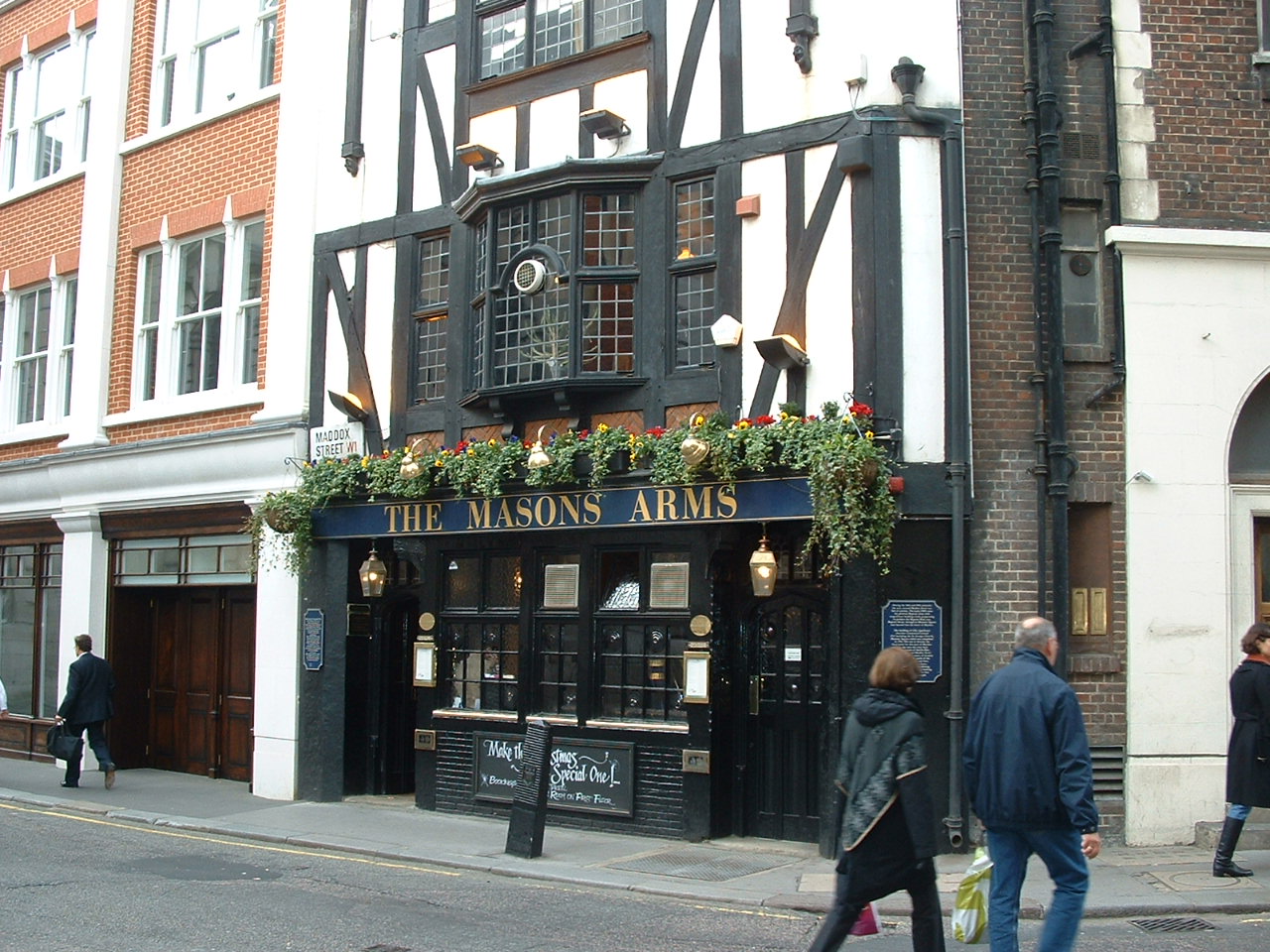
The Grenadier pub : Wilton Row S.W.1

Dickens Inn : St Catherines way E1

Nell Gwynne Pub: 2 Bull Inn Court W.C.2

Cask and Glass: 39 Palace Street, Westminster, London, SW1
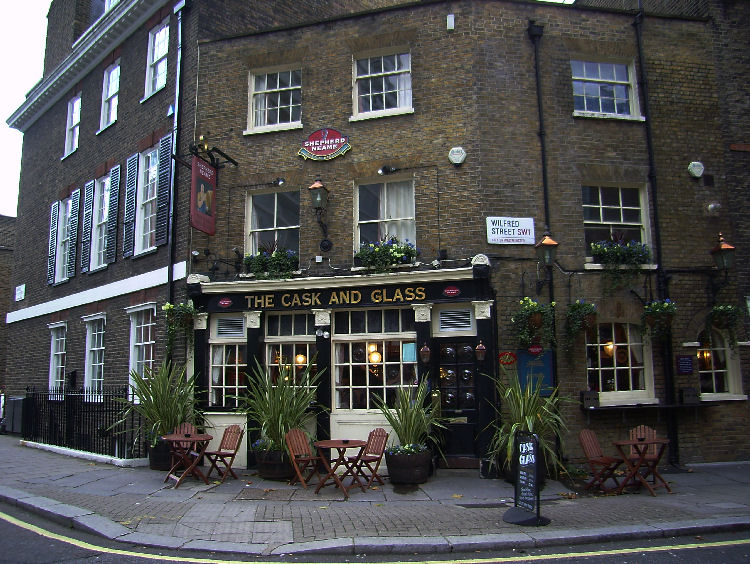
Cask and Glass pub with the side view of the Prisoner's house on the left.
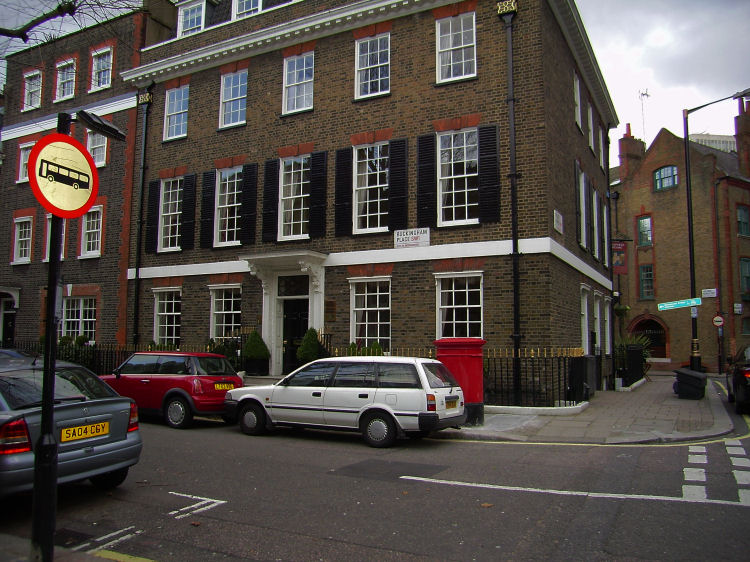
Front view of the Prisoner's house in Buckingham Street.
The Angel Public House: 101 Bermondsey Wall East, SE16
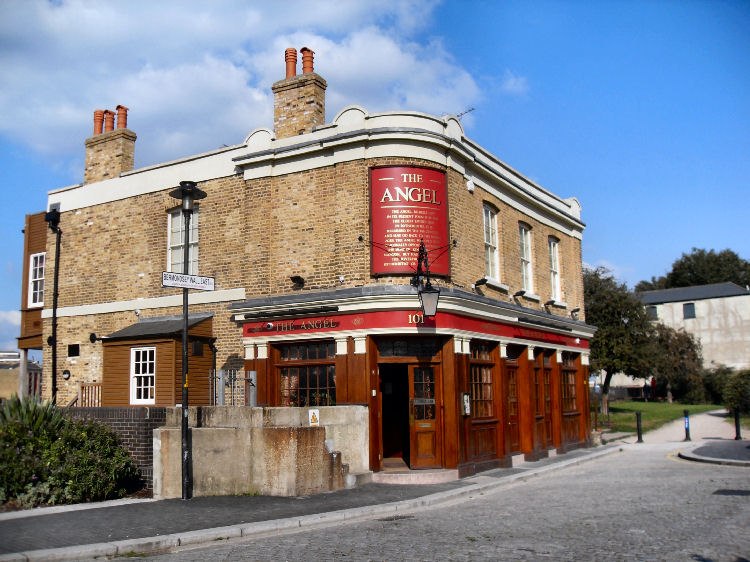
The Olde Wine Shades: 6 Martin Lane E.C.4
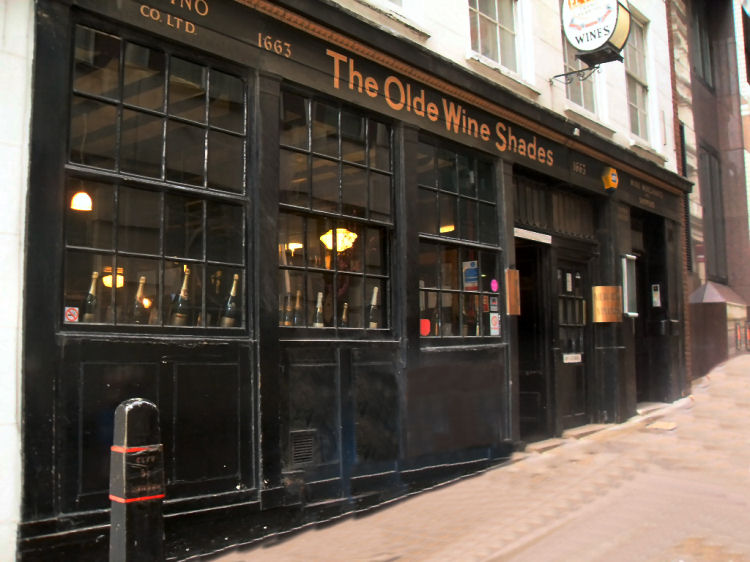
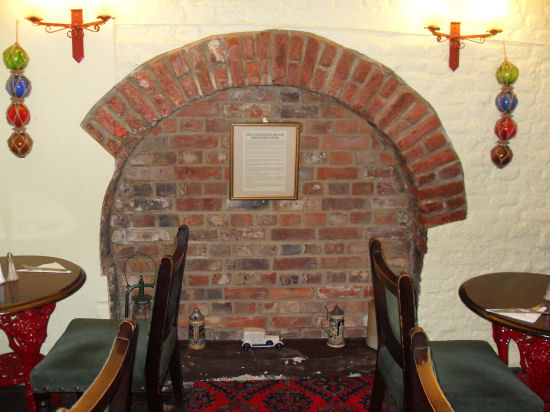
In 1663 this ancient vault was constructed of brick and limestone. The side tunnel entrance (with the raised floor area on the right hand side) led up to Martins Lane for in those days the road was many feet below what it is today. This provided a safe exit for the casks of brandy being off-loaded through the little door in the side wall for in those days the Thames was very wide, quite shallow and slow moving. Thus enabling the small boats to be rowed up the river at night to unload their precious cargo and hence evade the customs duty.
To become a valid custom it must have been used from “time whereof the memory of man runneth not to the contrary”. Thus the custom duty levied on imports has been lost in the mists of time.
The clandestine introduction of prohibited goods or smuggling, the very cause of which was the high rate of duty of goods imported from abroad gave the pirate the opportunity to evade the law.
The proximity of France and the injudicious character of differing tariffs led to smuggling in the first place.
In the buccaneering days of old, piracy and pirates were held in awe and admiration for their daring deeds upon the high seas but piracy of contraband goods into Britain has gone from the reckless pirate to the crafty schemer.
Customs tariff was levied upon many types of goods but tea, coffee, tobacco, wines, spirits, dried fruit and above all else brandy had the highest rate of duty levied on it. Thus the pirate took huge risks to outsmart the revenue.
From about 1815 to 1855 was the high point in smuggling. The preventative service had a fleet of 52 cruisers or revenue cutters and in 1822/23 captured 385 boats engaged in.
The tunnel beyond this wall sadly ceased to exist after a direct hit during the Blitz of 1940.






